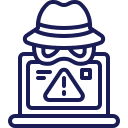Terrorism continues to evolve. Threats may come from abroad or be homegrown. Terrorists use tactics such as biological agents, weapons, explosives, and cyber attacks. Terrorists often use threats to create fear, convince people their government is powerless to prevent terrorism, and get immediate publicity for their causes. While you can be prepared in case of a terrorism event, these situations are often unpredictable and evolve quickly.
mass attacks
While the threat of attacks in public spaces are real, we can all take steps to prepare, protect, and help others.
An active shooter is an individual engaged in killing or attempting to kill people in a confined and public space. These situations are often over within 10 to 15 minutes, before law enforcement arrives on the scene. There is no pattern or method to the selection of victims by an active shooter. People need to be prepared mentally and physically to deal with these situations. In 2021, the FBI designated 61 shootings as active shooter incidents where 103 people were killed and 140 injured. This is a 96.8% increase from 2017 and a 52.5% increase from 2020.
When terrorists use vehicles to target pedestrians, breach security barriers, and deliver explosive devices.
See something, say something
If you see something suspicious, report it to authorities. In Wisconsin, call the Wisconsin Statewide Intelligence Center watch desk at 1-877-949-2824 and keep the five w’s in mind:


EXPRESSED OR IMPLIED THREAT
Threatening to commit a crime that could harm or kill people or damage a facility.

SURVEILLANCE
Prolonged interest in taking pictures/video of personnel, facilities, security features, or infrastructure in an unusual matter.

THEFT/LOSS/DIVERSION
Stealing or diverting items that belong to a facility or secured site.

TESTING OR PROBING SECURITY
Investigating or testing security and IT systems.

AVIATION ACTIVITY
Operating or interfacing with the operation of an aircraft that poses a threat.

BREACH/ATTEMPTED INTRUSION
Unauthorized people trying to gain access to a restricted area or impersonating authorized personnel.
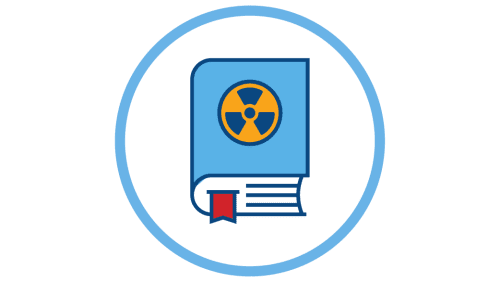
ACQUISITION OF EXPERTISE
Gaining skills or knowledge on a specific topic, such as flying a plane or facility security.

ELICITING INFORMATION
Questioning personnel beyond mere curiosity about an event, facility, or operations.

MISREPRESENTATION
Presenting false information or misusing documents to conceal possible illegal activity.

CYBERATTACK
Disrupting or compromising an organizations information technology systems.

RECRUITING/FINANCING
Funding suspicious or criminal activity or recruiting people to participate in criminal or terrorist activity.
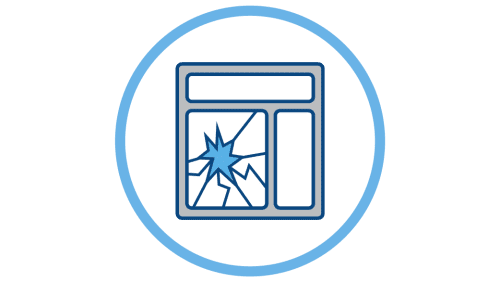
SABOTAGE/TEMPERING/VANDALISM
Damaging or destroying part of a facility, infrastructure or a secured site.

MATERIALS ACQUISITION/STORAGE
Acquisition and or storage of unusual materials such as cell phones, radio controllers, or toxic materials.

WEAPONS COLLECTION/STORAGE
Collection or discovery of unusual amounts of weapons, including chemicals and other destructive materials.

SECTOR-SPECIFIC INCIDENT
Actions which raise concern to specific sectors, such as power plants, regarding their personnel, facilities, systems or functions.
Public safety is everyone’s responsibility. If you see suspicious activity, report it to local law enforcement or a person of authority. Many states have designated a unique “tip line” to collect reports of terrorism-related suspicious activity.
additional MASS ATTACK resources
Homeland Security Action Guide for Vehicle Ramming:

FEMA Guide for attacks in crowded and public spaces:
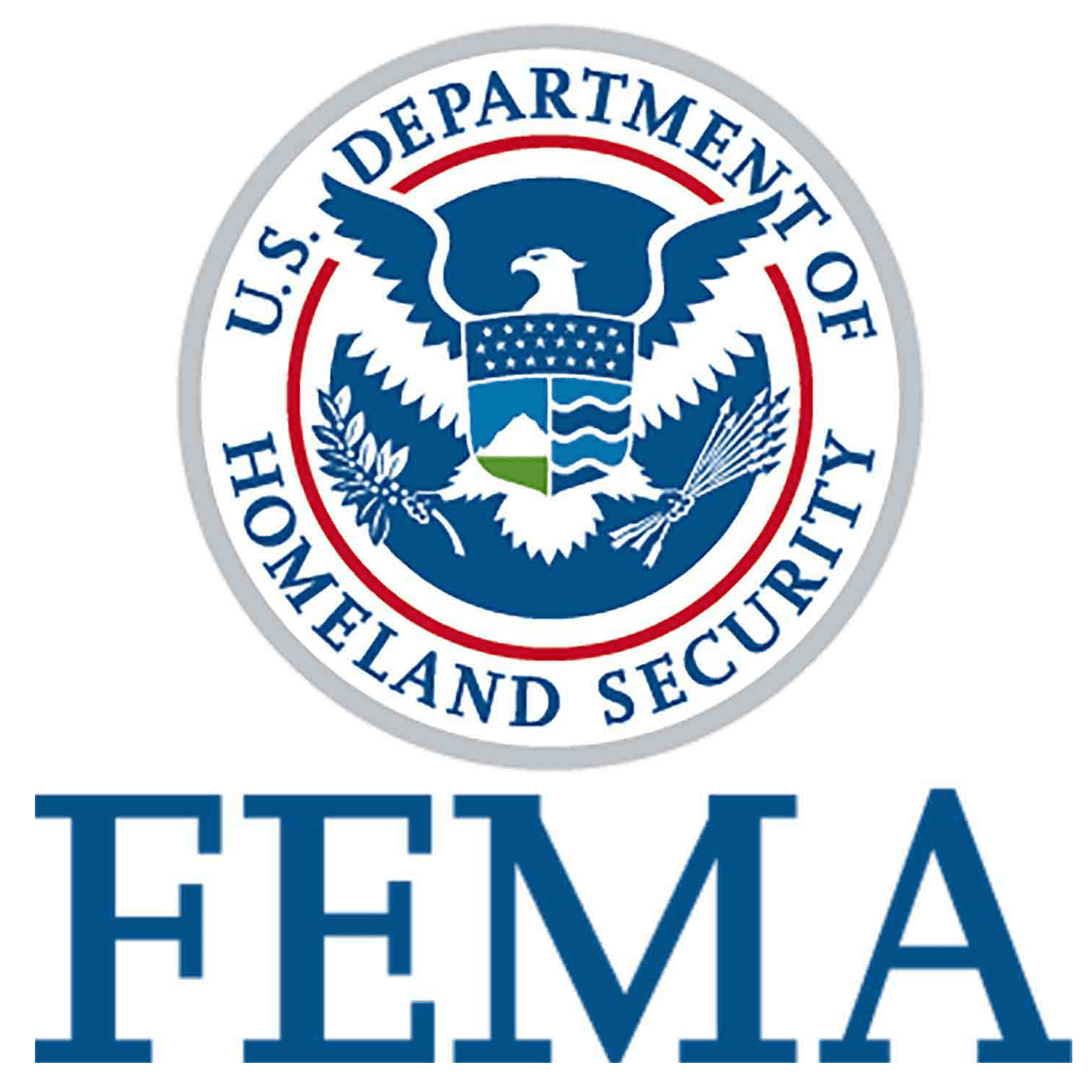
CISA Active Shooter Preparedness:

FBI Active Shooter resources:

BIOTERRORISM
A biological attack is the deliberate release of germs or other biological substances that can make you sick. Biological agents can be spread by spraying them into the air, through person-to-person contact, infecting animals that carry the disease to humans, and by contaminating food and water.
There are three basic groups of biological agents that could be likely used as weapons:
WHAT TO DO BEFORE, DURING AND AFTER A BIOLOGICAL ATTACK
A biological attack may not or may not be immediately obvious. In most cases, local health care workers will report a pattern of unusual illness or there could be a wave of sick people seeking emergency medical attention. You will be alerted through an emergency radio or TV broadcast, a phone call, or a home visit from an emergency response worker.
To prepare:
The first evidence of an attack may be when you notice symptoms of the disease caused by exposure to an agent. In the event of a biological attack, public health officials may not immediately be able to provide information on what you should do. It will take time to figure out exactly what the illness is, how it should be treated and who is in danger.
Pay attention to all official warnings and instructions on how to proceed. Medical services for a biological event may be handled differently due to increased demand.
The basic procedures and medical protocols for handling exposure to biological agents are the same as for any infectious disease.
additional bioterrorism resources
CDC’s list on potential agents:
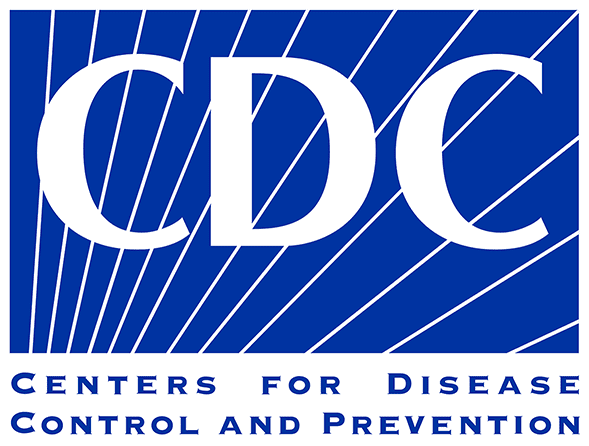
CDC Bioterrorism Preparedness and Response:

CDC Caring for children during biological threats:

OSHA Bioterrorism resource:

EXPLOSIONS
Explosive devices can be carried in a vehicle or by a person, delivered in a package, or concealed on roadsides. Terrorists have frequently used explosive devices as one of their most common weapons. These devices are highly portable and can easily be detonated from remote locations or by suicide bombers.
Follow these procedures:
IF YOU SEE A SUSPICIOUS ITEM
A suspicious item is any item that is reasonably believed to contain explosives, an improvised explosive device, or other hazardous materials that requires a bomb technician or specialized equipment to evaluate. Anything that is HOT (Hidden, Obviously suspicious, and not Typical) should be considered suspicious. Remember “If you see something, say something.”
If you encounter a suspicious item, use R.A.I.N.
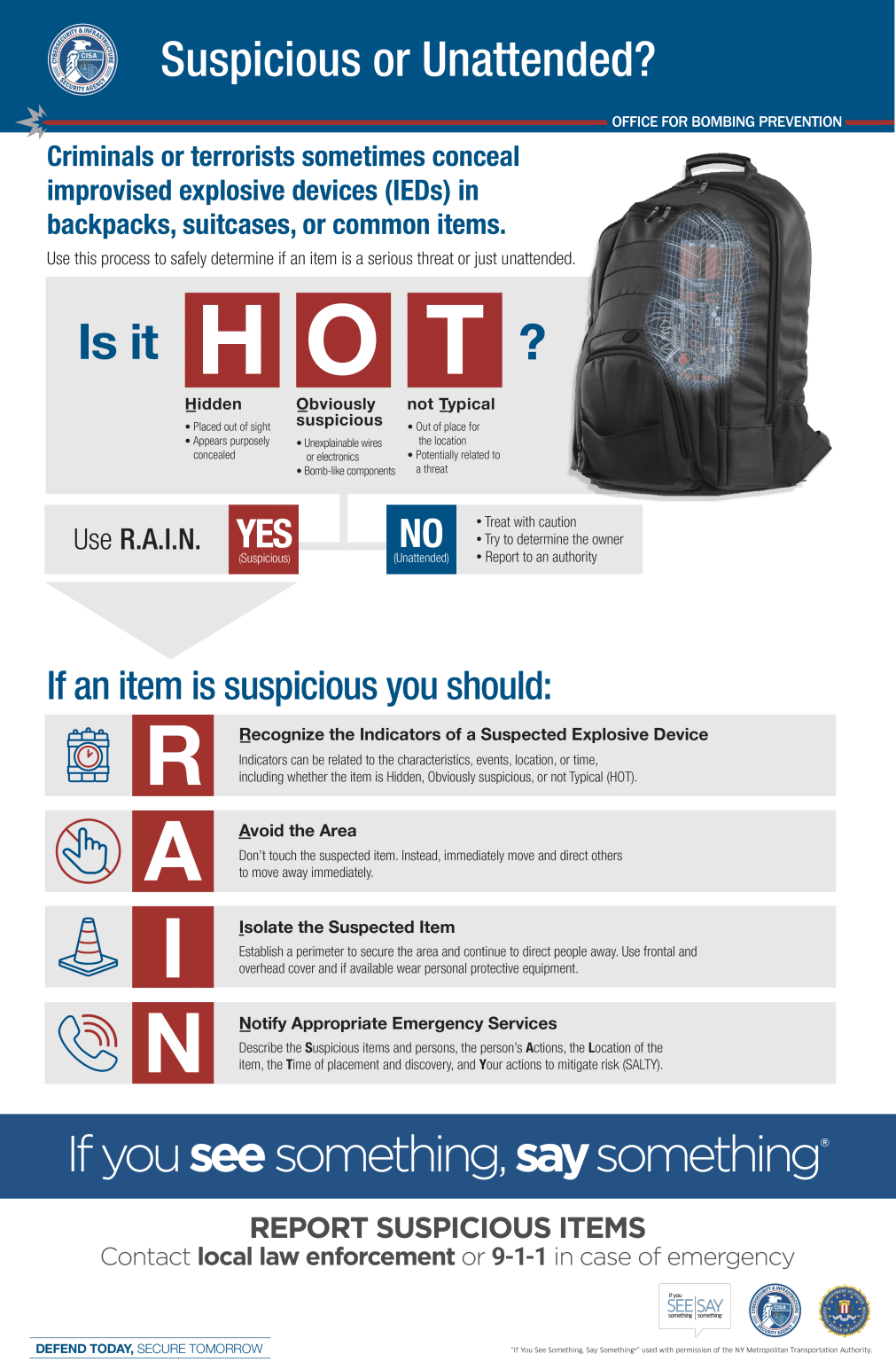
WHAT TO DO BEFORE, DURING AND AFTER AN EXPLOSION
additional EXPLOSION resources
If you see something, say something:

Dept. of Homeland Security: IED Attacks Fact Sheet:

CISA What to do with bomb threats:

What to do with Suspicious package video:

Dept. of Homeland Security: Bomb Threat Checklist:

Bomb Threat Guidance from DHS and DOJ:

OSHA Secondary Explosive Device Guide:





